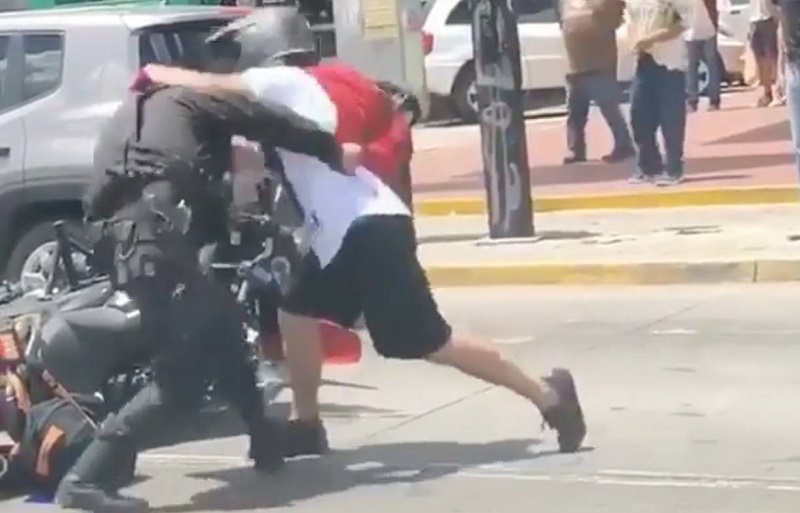

By Chief Joel F. Shults, Ed.D.
The remarkable aspect of today’s discussions and rantings about police brutality is the lack of facts driving the debate. The reality of police encounters with the public, including the criminal element, is that only a fraction of those encounters results in injury or death.
Federal Studies
A U.S. Department of Justice study from 2018 noted that citizen-police contacts have declined in recent years, but that 20% of citizens over age 16 will have an interaction with police in the span of a year. With about 700,000 police officers making traffic stops, interviewing witnesses and crime victims, and arresting suspects every day, there are millions of opportunities for police to engage in the use of force. But they usually don’t!
As related in another Justice Department report: “Observers note that police resolve millions of incidents each year without resorting to force and believe that the incidence of excessive force has been blown out of proportion. William A. Geller, a well-known researcher on police use of force, summarizes the views of these observers in saying, “If known abuses are the tip of an iceberg, then commendable restraint when officers could have applied force is like the zenith of Mt. Everest.”
The 2018 report states that only 2% of persons in police encounters felt that they were threatened with the use of force by the officers. Get out your calculators. If each of the 700,000 police officers makes just one citizen contact per day, that would be over 250 million contacts. If unlawful use of force was routine in policing, the streets would be scattered with bodies. In the most common form of police contact, the traffic stop, 91% agreed that the stop was legitimate, and 95% believed that the officer behaved properly.
Deadly Force
An article in the FBI’s Law Enforcement Bulletin relates a study which showed that “The study found that approximately 70 percent of the sample of police officers had been in a situation where they legally could have fired their weapon during a critical incident but chose not to. Officers were involved in an average of four such incidents during the course of their careers. Only 20 percent of the sample had been involved in critical incidents where they fired their weapon during the incident.”
My own survey of over 250 officers from around the country indicated that within any given 2 year period of service, 80% of officers will encounter a situation in which deadly force would have been legally and morally justified. Let’s do the math. Of 700,000 officers, 560,000 of them could have killed someone in the past two years, but fewer than 1,000 were killed yearly. In examining the stories of those deadly force events, the circumstances are chilling – violent resistance, shoot outs, hostage-taking, suicide by cop, and others a testament to the dangers facing law enforcement daily.
Reluctance to harm
Despite the incessant call for training, the vast majority of police officers have been trained or have developed their own skills for avoiding a fight. There are plenty of incentives for getting a suspect into custody peacefully. Officers know that going hands-on with a suspect can result in their own injury. Gaining compliance results in a safer arrest, less paperwork, lower risk of getting sued, and less chance of being the subject of a viral video or internal investigation.
Officers know that getting cooperative compliance before getting close to a suspect reduces that chance of being disarmed or ambushed. Ultimately the decision to end an arrest peacefully is up to the subject being arrested. The law requires compliance for lawful arrests, and police officers are in no way obligated to retreat. Even surveys of people who have been forcibly arrested reveal the arrestees’ general acknowledgment that they provoked the officers’ actions.
Legal hurdles to officers
In addition to merely avoiding their own injury, police officers are well indoctrinated to the legal restraints on their use of force. The primary consideration is the Constitution, which requires that all seizures be reasonable. The reasonableness of a given action can be debated endlessly, but law enforcement officers fully understand that arbitrary and excessive force can result in severe criminal and civil penalties that can destroy their career, finances, and even freedom. The balance of officer safety, offender safety, and public safety must always be resolved in favor of the public interest.